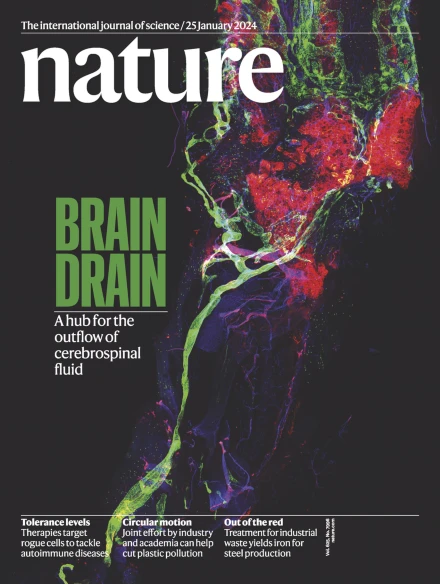Mechanical underwater adhesive devices for soft substrates
IF 48.5
1区 综合性期刊
Q1 MULTIDISCIPLINARY SCIENCES
引用次数: 0
Abstract
Achieving long-term underwater adhesion to dynamic, regenerating soft substrates that undergo extreme fluctuations in pH and moisture remains a major unresolved challenge, with far-reaching implications for healthcare, manufacturing, robotics and marine applications1–16. Here, inspired by remoras—fish equipped with specialized adhesive discs—we developed the Mechanical Underwater Soft Adhesion System (MUSAS). Through detailed anatomical, behavioural, physical and biomimetic investigations of remora adhesion on soft substrates, we uncovered the key physical principles and evolutionary adaptations underlying their robust attachment. These insights guided the design of MUSAS, which shows extraordinary versatility, adhering securely to a wide range of soft substrates with varying roughness, stiffness and structural integrity. MUSAS achieves an adhesion-force-to-weight ratio of up to 1,391-fold and maintains performance under extreme pH and moisture conditions. We demonstrate its utility across highly translational models, including in vitro, ex vivo and in vivo settings, enabling applications such as ultraminiaturized aquatic kinetic temperature sensors, non-invasive gastroesophageal reflux monitoring, long-acting antiretroviral drug delivery and messenger RNA administration via the gastrointestinal tract. A remora-inspired mechanical underwater adhesive device adheres securely to a range of soft substrates and maintains performance under extreme pH and moisture conditions, with potential applications in biosensing and drug delivery.

软基材用机械水下粘接装置。
在经受pH值和湿度极端波动的动态、可再生软基质上实现长期的水下粘附仍然是一个主要的未解决的挑战,对医疗保健、制造业、机器人和海洋应用具有深远的影响1-16。在这里,我们的灵感来自于装有专门粘连盘的鱼,我们开发了机械水下软粘连系统(MUSAS)。通过详细的解剖学、行为学、物理学和仿生学研究,我们揭示了它们在柔软基质上粘附的关键物理原理和进化适应。这些见解指导了MUSAS的设计,它显示出非凡的多功能性,可以安全地粘附在具有不同粗糙度,刚度和结构完整性的各种软基板上。MUSAS的黏附力重量比高达1391倍,在极端pH值和潮湿条件下也能保持良好的性能。我们证明了它在高度可翻译的模型中的实用性,包括体外、离体和体内设置,实现了诸如超微型水生动态温度传感器、无创胃食管反流监测、长效抗逆转录病毒药物递送和通过胃肠道的信使RNA给药等应用。
本文章由计算机程序翻译,如有差异,请以英文原文为准。
求助全文
约1分钟内获得全文
求助全文
来源期刊

Nature
综合性期刊-综合性期刊
CiteScore
90.00
自引率
1.20%
发文量
3652
审稿时长
3 months
期刊介绍:
Nature is a prestigious international journal that publishes peer-reviewed research in various scientific and technological fields. The selection of articles is based on criteria such as originality, importance, interdisciplinary relevance, timeliness, accessibility, elegance, and surprising conclusions. In addition to showcasing significant scientific advances, Nature delivers rapid, authoritative, insightful news, and interpretation of current and upcoming trends impacting science, scientists, and the broader public. The journal serves a dual purpose: firstly, to promptly share noteworthy scientific advances and foster discussions among scientists, and secondly, to ensure the swift dissemination of scientific results globally, emphasizing their significance for knowledge, culture, and daily life.
 求助内容:
求助内容: 应助结果提醒方式:
应助结果提醒方式:


